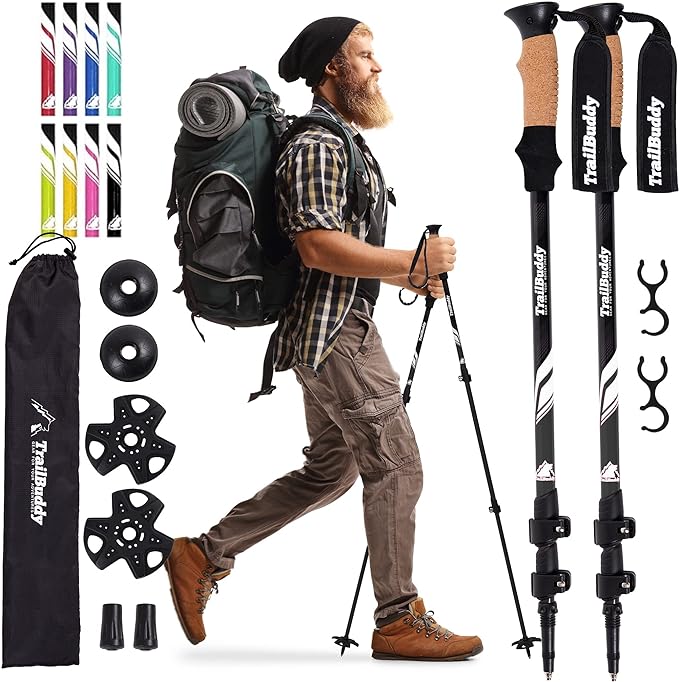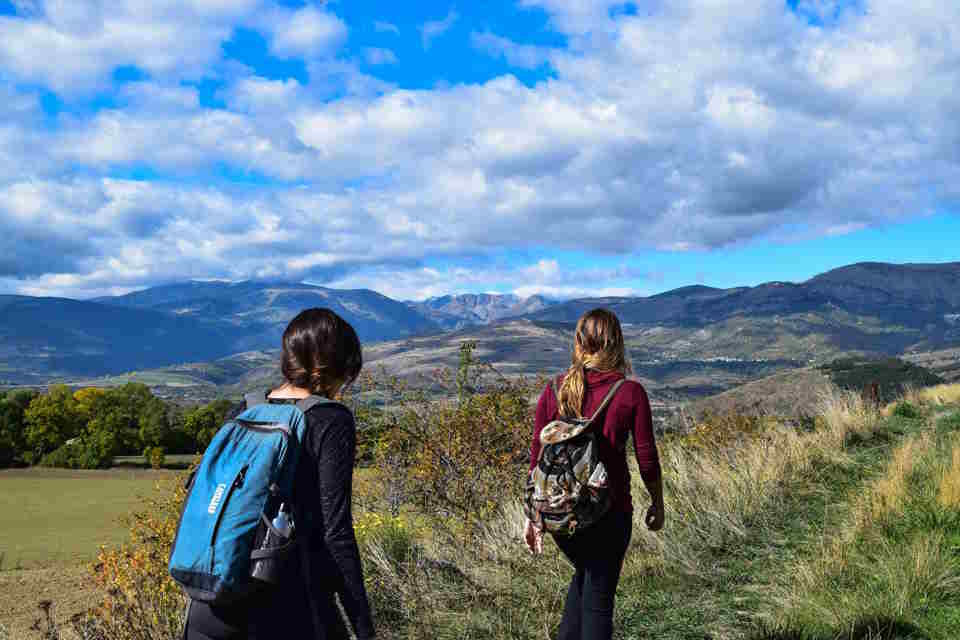Are you a hiking enthusiast looking to enhance your outdoor adventures with the right trekking pole? Choosing the correct length trekking pole is crucial for ensuring comfort, stability, and support on the trail. In this blog post, we will explore the importance of selecting the right length trekking pole and how it can impact your hiking experience. We will also discuss the process of measuring your ideal trekking pole length, as well as the various factors to consider when determining the best fit for your needs. Additionally, we will delve into the steps for adjusting and testing the fit of your trekking pole to ensure it provides the support and stability you require. Finally, we will highlight the numerous benefits of using the correct length trekking pole for your outdoor expeditions. Whether you’re a beginner or a seasoned hiker, understanding the significance of trekking pole length is essential for a successful and enjoyable hiking experience.Discover the importance of choosing the right length trekking pole and learn how to measure, adjust, and test the fit for maximum benefits.
Importance Of Choosing The Right Length Trekking Pole
When it comes to trekking, the length of your trekking pole can have a major impact on your overall experience. Choosing the right length is crucial for ensuring that you can use your trekking pole effectively and comfortably throughout your journey.
One of the most important factors to consider when determining the ideal length of your trekking pole is your height. Taller individuals will generally require a longer pole, while shorter individuals will benefit from a shorter pole. Having the correct length will help you maintain proper posture and distribute weight evenly, reducing strain on your body.
Another key consideration when choosing the right length for your trekking pole is the type of terrain you will be navigating. Different types of terrain may require different lengths for optimal performance. For example, when trekking uphill, a shorter pole may be more suitable, while longer poles might be beneficial for downhill sections.
Overall, the importance of choosing the right length for your trekking pole cannot be overstated. It can greatly impact your comfort, stability, and overall performance during your trek. Taking the time to measure and adjust the length of your pole will ensure that you are fully equipped to tackle the challenges of the trail.
Measuring Your Ideal Trekking Pole Length
When it comes to choosing the right trekking pole for your hiking adventures, one of the most important factors to consider is the ideal length of the pole. Measuring your ideal trekking pole length is crucial for ensuring that you have the appropriate support and stability while navigating through different terrains.
One of the first steps in measuring your ideal trekking pole length is to stand up straight with your arms at your sides. The elbow bend should be at a 90-degree angle when holding the trekking pole, allowing for comfortable and efficient use of the pole while hiking.
Additionally, consider the terrain you will be trekking on when determining the ideal length. For steep uphill climbs, a shorter length may be preferred for better balance and propulsion. On the other hand, longer poles may be beneficial for downhill descents to reduce the impact on your knees and provide additional stability.
Lastly, it’s important to test the fit of the trekking pole before hitting the trails. Make adjustments as necessary to ensure that the pole is the correct length for your comfort and support. Taking the time to measure your ideal trekking pole length will enhance your overall hiking experience and reduce the risk of fatigue and injury.
Factors To Consider When Determining Trekking Pole Length
When determining the length of your trekking poles, it’s important to consider a few key factors to ensure that you have the right fit for your needs. One of the most crucial factors to consider is your height. Taller individuals will typically require longer poles, while shorter individuals will need shorter ones. The general rule of thumb is that when holding the pole with the tip on the ground, your arm should be at a 90-degree angle. This ensures that you have the correct length for your height.
Another factor to consider is the type of terrain you will be trekking on. If you will be encountering steep, uneven terrain, you may want slightly shorter poles to provide better balance and stability. On the other hand, if you will be trekking on flat or gently sloping terrain, longer poles may be more suitable for a longer stride and better posture.
It’s also important to consider your personal preference and comfort when determining trekking pole length. Some hikers may find that longer poles provide better support and leverage, while others may feel more comfortable with shorter poles. It’s important to test out different lengths to see what feels most natural and comfortable for you.
Lastly, consider the weight of the poles. Longer poles tend to be slightly heavier, so if weight is a concern for you, you may want to opt for shorter poles. However, keep in mind that the added support and stability of longer poles may outweigh the extra weight for some hikers.
Adjusting And Testing The Fit Of Your Trekking Pole
When it comes to trekking, having the correct length trekking pole is essential for comfort and stability. But it’s not enough to simply choose the right length – you also need to make sure that the pole is properly adjusted to fit your body. This is where the process of adjusting and testing the fit of your trekking pole comes into play.
One of the first things you should do when adjusting your trekking pole is to find a flat surface and extend the pole to its full length. Then, hold the pole vertically, with the tip on the ground, and place your hands on the grips. Your elbows should be at a 90-degree angle, which is the ideal position for maximizing power and minimizing fatigue.
Next, you’ll want to test the fit of your trekking pole by taking it for a test hike. Pay attention to how it feels as you walk – if the pole is the right length, it should provide just enough support without causing you to hunch over or strain your shoulders. If the pole feels too long or too short, you’ll need to make further adjustments to find the perfect fit.
Ultimately, taking the time to properly adjust and test the fit of your trekking pole can make a world of difference in your overall hiking experience. By ensuring that your pole is the right length and properly adjusted, you’ll be able to enjoy greater comfort, stability, and efficiency on the trail.
Benefits Of Using The Correct Length Trekking Pole
When it comes to choosing the right trekking pole length, the benefits of using the correct length cannot be overstated. Hiking with a trekking pole that is the perfect size for your height and stride can make a world of difference in terms of comfort and efficiency on the trail. A correctly sized trekking pole can help reduce strain on your knees and ankles, improve balance, and provide added stability on uneven terrain. Additionally, using the right length pole can help to prevent shoulder and back pain, allowing you to enjoy your outdoor adventure to the fullest.
One of the main benefits of using the correct length trekking pole is the reduction of fatigue and muscle soreness. By using a pole that is the ideal size for your body, you can engage your upper body muscles more effectively, helping to distribute the workload and reduce strain on your lower body. This can lead to a more enjoyable hiking experience and allow you to go further and longer without feeling as fatigued.
Another major benefit of using a properly sized trekking pole is the increased support and stability it provides, particularly when traversing challenging terrain. Whether you’re hiking on steep inclines, navigating rocky trails, or crossing streams, a well-fitted pole can help you maintain your balance and prevent slips and falls. This added support can instill greater confidence and peace of mind, allowing you to push your limits and explore new trails with ease.
Lastly, the benefits of using the correct length trekking pole extend to your overall posture and joint health. Properly sized poles can help promote good alignment and mechanics, reducing the risk of strain and injury to your joints and muscles. By maintaining an upright posture and taking some of the load off your lower body, you can experience less discomfort and fatigue, leading to a more enjoyable and sustainable hiking experience for years to come.









